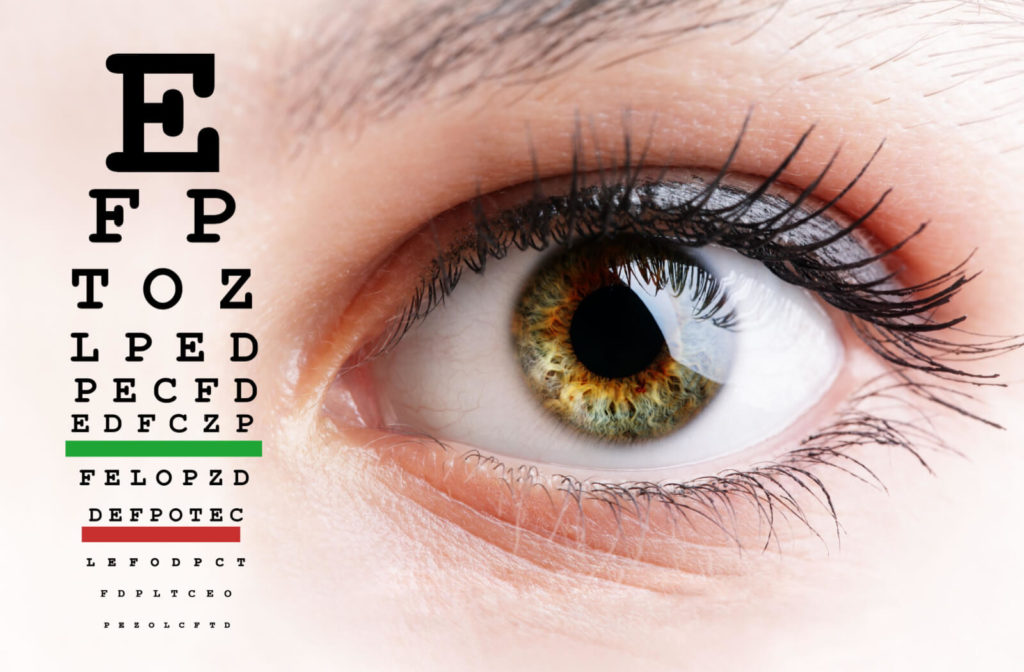What to Know Before You Go
When most people think of an eye exam, they think of vision testing. While evaluating visual acuity is part of the routine, there’s much more to check than sharp distance or near vision. There are also differences between eye exams for children and adults.
So, what’s usually included in a routine eye exam?
What Is a Comprehensive Eye Exam?
A comprehensive eye exam is similar to a physical with a general practitioner; only your optometrist focuses on the visual system. While eye structures are a crucial part of the evaluations, the visual system also includes the brain’s neural pathways and visual centers; the brain interprets what our eyes see.
Optometrists examine how well your eyes work, including how comfortable you are with your vision.
Patient History
While the order of evaluations can differ from appointment to appointment, a discussion of your history is always part of the process. Your optometrists will go over your vision and health history and your family’s vision and health history.
Knowing your history can help your optometrist personalize your care and determine your risk level for eye conditions.
Preliminary Tests
Preliminary tests can include various evaluations to check your eye health and vision, such as:
- Color vision
- Depth perception
- Eye muscle movements
- Peripheral (side vision)
- Pupil responses
Usually, optometrists assess peripheral vision with a visual field test, with each eye evaluated separately. The results indicate how sensitive your side vision is without moving your eyes. Visual field testing can also help diagnose if an eye injury or disease has affected your sight.
In children’s eye exams, the types of assessments can differ depending on the stage of their visual development. For example, children under 2 years old are still learning visual skills to track objects and control eye movements. Whereas preschool-aged children (2–5 years old) are fine-tuning the visual perception abilities that they need to learn, read, and write.
Eye Health Evaluation
After preliminary testing, optometrists evaluate the visual system using various tests and technology. Your optometrists will check inner and outer eye structures, using imaging technology to assess the inside of the eye.
There are multiple retinal imaging methods, with ocular coherence tomography (OCT) being one of the most common. Retinal imaging uses noninvasive technology to scan tissue at the back of the eye, including the retina, optic nerve, and blood vessels. For example, OCT scans can create 3D images to help optometrists evaluate changes over time.
Your optometrist may use dilating eye drops before retinal imaging to widen the pupil, making capturing images of the back of the eye easier.
Imaging of the inner eye can help optometrists detect various eye problems, including:
Optometrists also evaluate the health of outer eye structures with tools, microscopes, and diagnostic technology. Many testing devices and technologies are available, so what you experience during your exam may vary.
For example, tonometry tests intraocular pressure (IOP) to evaluate fluid buildup in the eye. There are contact and noncontact tonometers, each with advantages and disadvantages. Testing eye pressure is crucial for diagnosing glaucoma and protecting the optic nerve.
Visual Acuity & Refraction Testing
Visual acuity and refraction testing are sight tests. The Snellen eye chart or letter chart is probably the best-known vision test used to assess the sharpness or clarity of your vision. Your results are based on what the average person can see 20 feet away from the chart.
For example, 20/20 is average. 20/40 vision indicates you need to be 20 feet away to see what the average person can see from 40 feet away.
Blurry distance or near vision is commonly caused by a refractive error. When the eye has an irregular shape, light cannot refract or focus correctly inside the eye. Contact lenses or glasses can help correct how light is focused to improve visual sharpness.
Refractive errors include:
- Astigmatism
- Hyperopia (farsightedness)
- Myopia (nearsightedness)
- Presbyopia
Refraction testing often involves the use of a:
- Phoropter – a device with multiple lenses. The patient looks through the device (like looking through binoculars) while the optometrist switches between lens powers to determine the prescription.
- Retinoscope – a handheld instrument attached to a light. The optometrist evaluates how light is reflected to determine refraction.
Your routine eye exam can determine your eyeglass prescription. However, to wear contact lenses, you will need a separate prescription. A contact lens exam has additional testing unique for the shape and comfort of your contact lens, including the curvature of your eye and tear film quality.
Protect Your Eye Health
Routine eye exams are an essential part of eye care. While most comprehensive eye exams follow a similar process with the same tools, your optometrist will also personalize the exam based on your vision and health needs.
At Rancho Santa Margarita Optometry, our compassionate team of eye doctors strives to deliver quality vision care for you and your family. Healthy eyes support healthy lives, so book your routine eye exam today!


